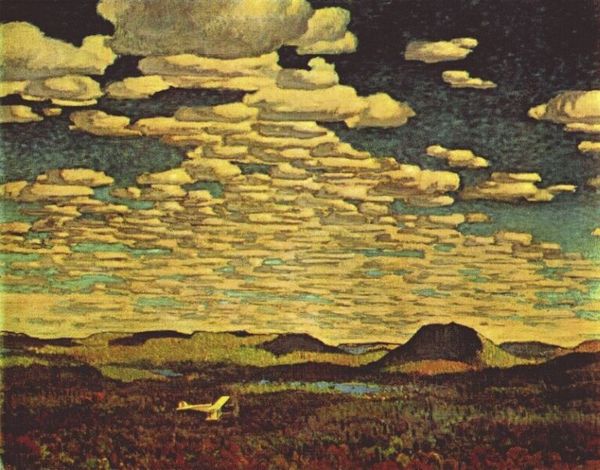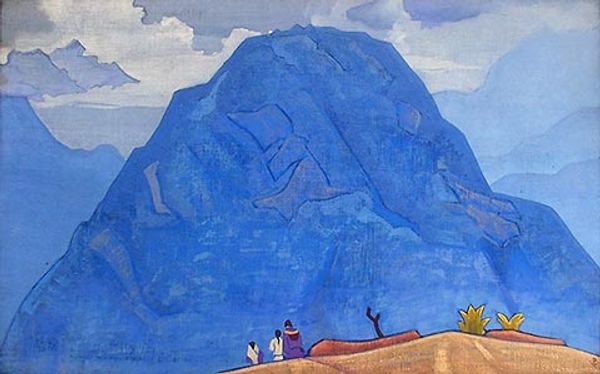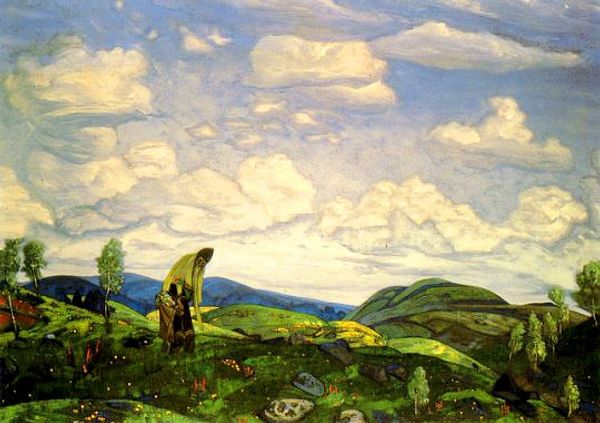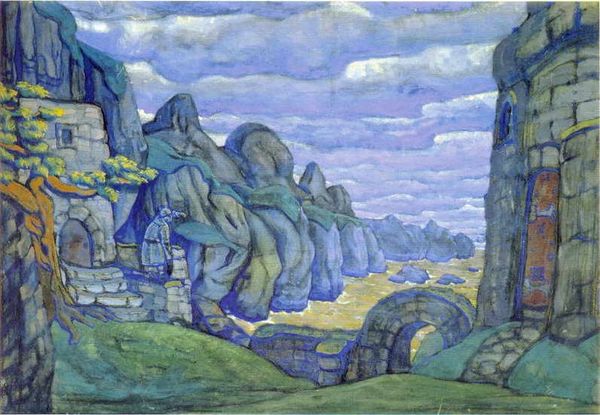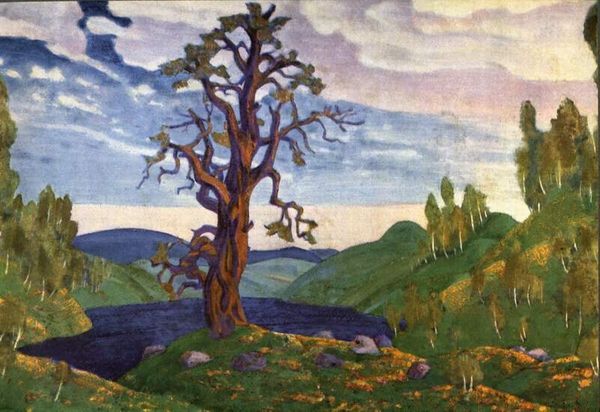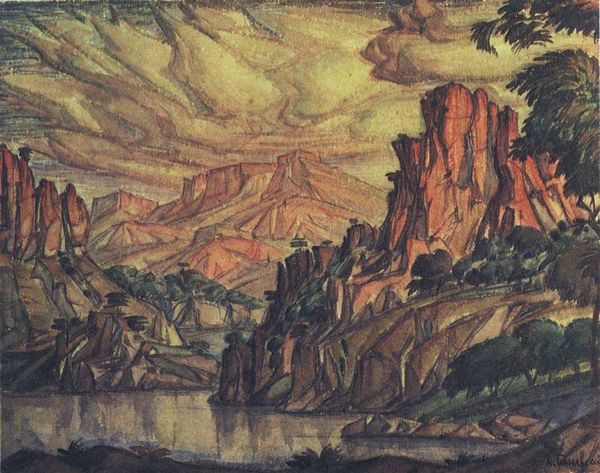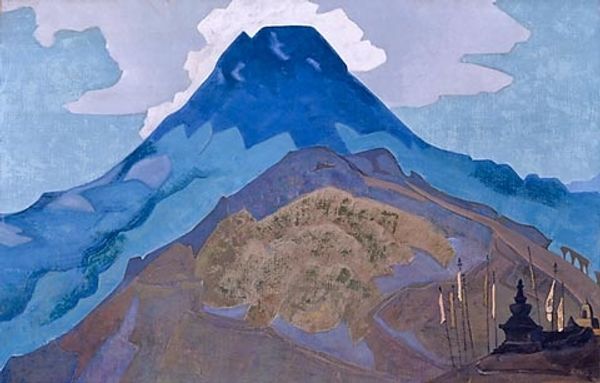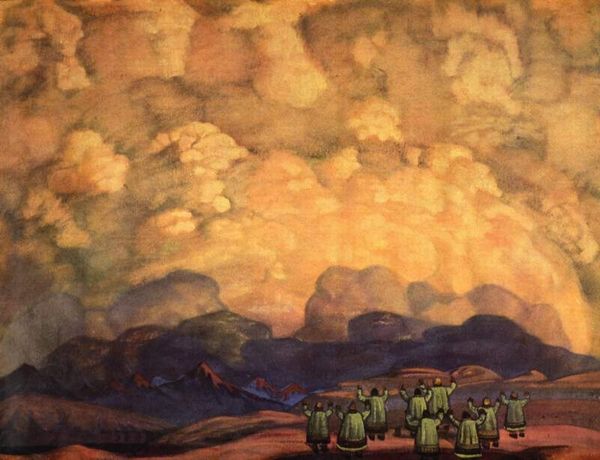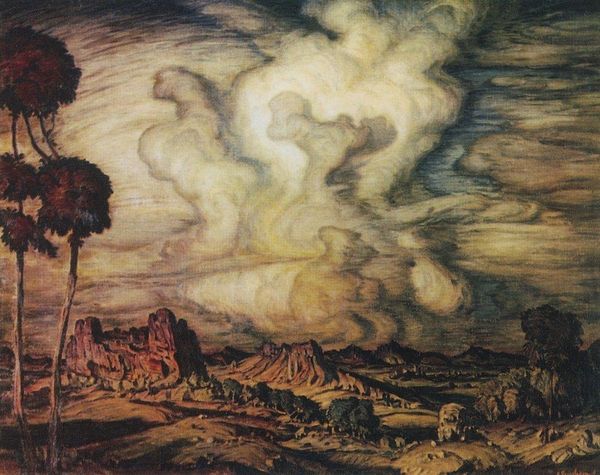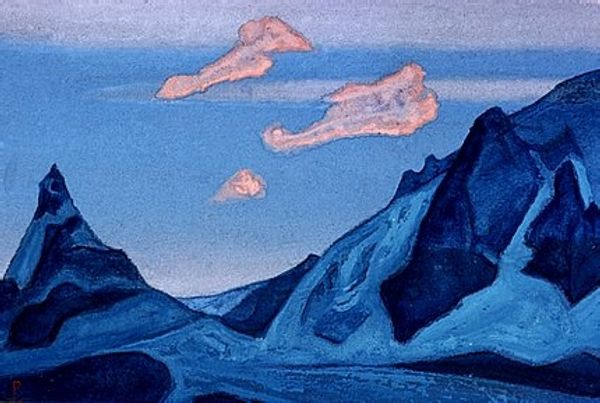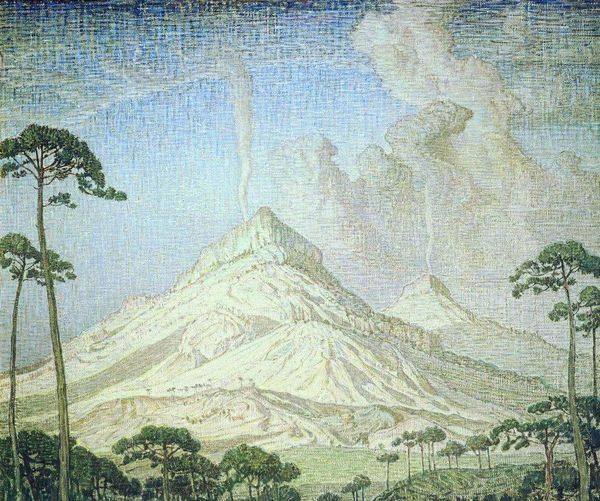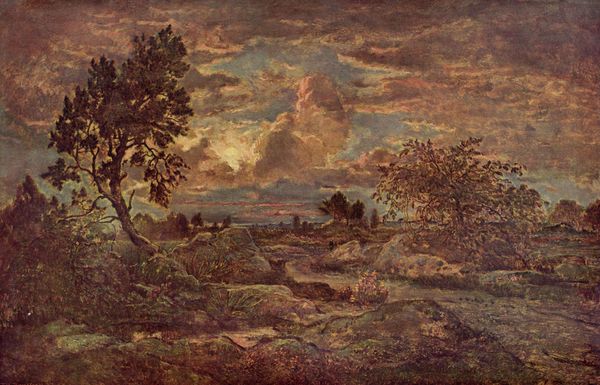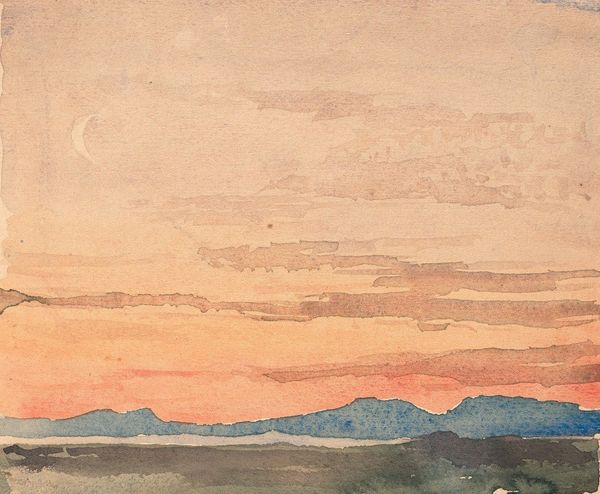
Copyright: Public domain
Editor: Here we have Nicholas Roerich’s "The Great Sacrifice," a watercolor from 1912. There's such a serene quality to it, even with that implied narrative of sacrifice in the title. Those figures silhouetted against the sky... what strikes you most when you look at this, Professor? Curator: The clustering. Consider the repetition of figures, huddled, cloaked… Doesn’t it suggest an initiation into a pre-historic religion, almost a secretive knowledge passed down through symbols? These aren't just figures; they are carriers of cultural memory. Editor: Pre-historic, interesting. I hadn’t considered that. So the grouping is important symbolically? Curator: Vital! The circle they form echoes ancient rites, the eternal return. Look closely: even the stones seem to mimic their posture, a sacred landscape resonating with the figures’ internal state. Can you feel how the image pulls at something deeply embedded in your cultural psyche, perhaps related to a pagan ritual? Editor: I do, now that you point it out. I thought it was just a peaceful scene, but there's something deeper. Curator: Precisely. The "sacrifice" in the title might allude not to physical offering, but to the surrendering of the self to a collective purpose, a powerful psychological resonance transmitted across centuries. This image offers insight into primal urges, both dark and reverent. Editor: So, Roerich is using these figures as symbols, linking us back to a shared past, a kind of collective consciousness expressed visually. It’s a bit unsettling, but compelling. Curator: Exactly. Art allows us to glimpse into cultural inheritance; each colour, shape, and arrangement holds untold stories. Editor: I'll definitely look at Roerich's work differently from now on. Thanks for unlocking that!
Comments
No comments
Be the first to comment and join the conversation on the ultimate creative platform.
